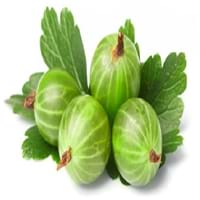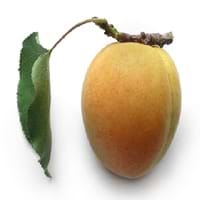Health Benefits
Arthritis prevention, Cancer prevention, Liver health, Scurvy treatment, Ulcer prevention
Asthma treatment, Cancer prevention, Controls blood pressure, Digestive aid, Heart care, Maintains hormonal balance, Regulation of heart rate, Skin cleansing, Skin rejuvenation
General Benefits
Boosts immune system, Digestive aid, Eye care, Fights against infections, Improves blood circulation, Maintains healthy cholesterol level, Sore throat treatment, Treatment of common cold
Boosts immune system, Controls blood pressure, Digestive aid, Eye care, Maintains healthy cholesterol level, Strengthens bones
Skin Benefits
Anti-aging benefits, Brightens and lightens complexion, Reduces wrinkles, Treatment of acne
Hydrates skin, Reduces wrinkles, Treatment of dark spots, Treatment of skin diseases
Hair Benefits
Prevents hair loss, Promotes longer and healthier hair, Treatment of dandruff
Good conditioner, Regulates hair growth, Rejuvenates scalp, Softening mask, Treatment of dandruff
Allergy Symptoms
Constipation, Diarrhea, Drop in blood pressure, Eczema, Facial swelling, Hives, Hoarseness, Itching, Itchy eyes, Nausea, Red rash, Redness of eyes, Runny nose, Sore eyes, Swelling of mouth, tongue or lips, Tingling sensation in mouth, Vomiting
Abdominal cramps, Anaphylaxis, Breathing difficulty, Diarrhea, Itching of mouth, Itching sensation in throat, Swelling of mouth, tongue or lips, Vomiting, Wheezing
Side Effects
Gastric irritation
Dizziness, Headache, Nausea, Vomiting
Best Time to Eat
Best if taken as a breakfast (or empty stomach), As a snack in the late afternoon, Don't consume at night and before bed, Morning time (before lunch)
Best if taken as a breakfast (or empty stomach), As a snack in the late afternoon, Don't consume at night and before bed, Eat the fresh ones, avoid mixing with any other foods, don't eat after meal.
Vitamin B5 (Pantothenic Acid)
Vitamin C (Ascorbic Acid)
Vitamin K (Phyllochinone)
Not Available
Lutein+Zeaxanthin
Not Available
Calories in Fresh Fruit with Peel
Calories in Fresh Fruit without Peel
Not Available
Not Available
Calories in Frozen Form
Not Available
Not Available
Calories in Dried Form
Not Available
Type
Berry, Tree fruit
Tree fruit
Varieties
Whinham's Industry, Green Hansa, Clark, Chataqua, Invicta, Keepsake, Lepaa Red, May Duke and Whitesmith
Gold Cot, Tilton, Wenatchee, Goldbar, Gold Kist, Tomcot, Harcot, Brittany Gold, Harglow, Hunza, Moorpark, Patterson and Royal Rosa
Color
Green, Purple, Red, Yellow
Orange, Yellowish-orange
Inside Color
Yellowish Green
Yellow
Taste
Astringent
Smooth, Sweet
Origin
Africa, Europe, South-West Asia
China
Soil Type
Loamy, Well-drained
Well-drained
Climatic Conditions
Dry, Warm
Dry, Hot
Facts about
- Traditionally, kids were told that babies were found under gooseberry bushes.
- They are also called 'fayberries' due to an ancient belief that fairies hid in gooseberry bushes to avoid danger.
- 9 Jan is considered as the National Apricot Day.
- Apricots have been around for more than 4000 yrs.
- In latin, the meaning of apricot is 'precious'.
- 95% of apricots in the US are produced by California.
Top Producer
Germany
Turkey
Other Countries
Austria, Czech Republic, Denmark, Hungary, Lithuania, Poland, Russia, Ukraine, United Kingdom
Algeria, Egypt, France, Iran, Italy, Morocco, Pakistan, Spain, Uzbekistan
Top Importer
Not Available
United States of America
Top Exporter
Not Available
France
Botanical Name
Ribes uva-crispa
Prunus armeniaca
Synonym
Ribes grossularia
Not Available
Subkingdom
Tracheobionta
Tracheobionta
Division
Magnoliophyta
Magnoliophyta
Class
Magnoliopsida
Magnoliopsida
Subclass
Dillenhidae
Rosidae
Order
Saxifragales
Rosales
Family
Grossulariaceae
Rosaceae
Species
R. uva-crispa
P. armeniaca
Generic Group
Saxifrage
Rose









